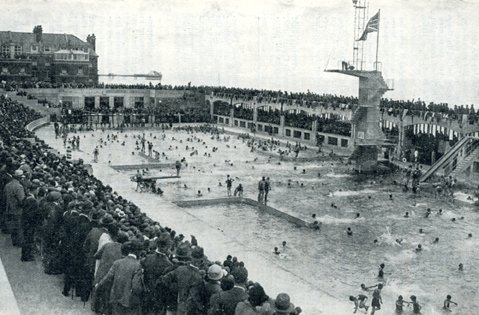Standard height from the floor to the bullseye on the dartboard is 5 feet 8 inches, while the oche (distance between the front of the board and the toe line) should measure 7 feet 9.25inches. Basic Rules: In a game of 501 the object is for one player or a team to be the first to reach zero from starting a total of 50.
Various games can be played (and still are played informally) using the standard dartboard. However, in the official game, any dart landing inside the outer wire scores as follows:
- Hitting one of the large portions of each of the numbered sections, traditionally alternately colored black and white, scores the points value of that section.
- Hitting the thin inner portions of these sections, roughly halfway between the outer wire and the central circle colored red or green, scores triple the points value of that section.
- Hitting the thin outer portions of these sections, again colored red or green, scores double the points value of that section. The double-20 is often referred to as double-top, reflecting the 20’s position on the dartboard.
- The central circle is divided into a green outer ring worth 25 points (known as “outer”, “outer bull”, or “single bull”) and a red or black inner circle (usually known as “bull”, “inner bull” or “double bull”), worth 50 points. The term “bullseye” can mean either the whole central part of the board or just the inner red/black section. The term “bull’s ring” usually means just the green outer ring. The inner bull counts as a double when doubling in or out.
- Hitting outside the outer wire scores nothing.
- A dart only scores if its point is embedded in or is touching the playing surface. This rule applies to any dart that lands in such a way as to be partially or totally supported by others that have already hit the board.
- When a standard board is used, any dart whose point does not remain in contact with the playing surface until being collected by the player does not score. This includes darts that bounce off the board for any reason, that fall off on their own, or that are dislodged by the impact of later throws. However, when an electronic board is used, fallen/dislodged darts do score as long as their impacts have registered on the board first.
The highest score possible with three darts is 180, commonly known as a “ton 80” (100 points is called a ton), obtained when all three darts land in the triple 20. In the televised game, the referee frequently announces a score of 180 in exuberant style. A “quad” ring appeared briefly between the triple ring and the bull in the 1990s, leading to a potential 240 maximum (three quad-20s), a 210 maximum checkout (Q20-Q20-Bull) and seven dart finishes from a 501 start (five quad-20s, triple-17, bullseye), but was swiftly dropped from professional tournament play after only two years. One make of this board was the Harrows Quadro 240.










